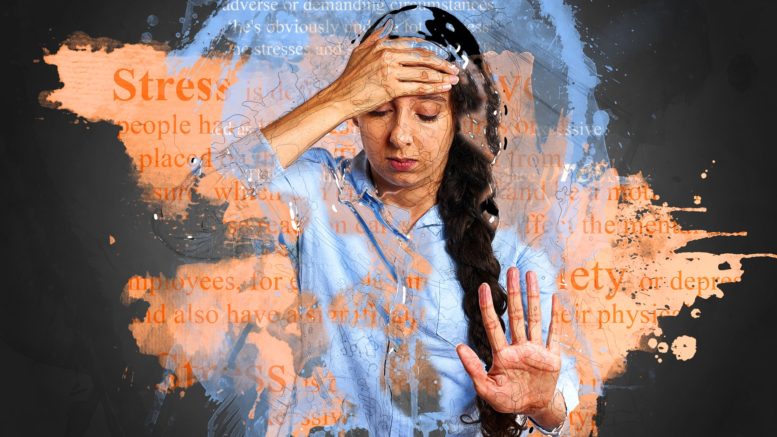Anxiety disorders are a common mental health condition that people deal with daily. It can be hard to know how to best deal with them, especially if you’ve never experienced one before. This post will discuss the most common types of anxiety disorders and how you can deal with them.
What Are Anxiety Disorders?
Anxiety disorders are a group of mental health conditions that involve excessive worry and fear. People with anxiety disorders tend to feel overly worried about everyday situations and have difficulty dealing with normal life stressors. There are a variety of anxiety disorders, each with its own unique set of symptoms. The most common anxiety disorders include:
Social Anxiety Disorder (SAD)
SAD is the most common type of anxiety disorder, affecting around 15 million adults in the United States. People with SAD experience intense fear and self-consciousness in social situations, to the point where it interferes with their everyday lives. If you have SAD, you may find that you avoid social gatherings altogether or that you feel anxious when you have to speak in public.
Separation Anxiety Disorder
Separation anxiety disorder (SAD) is when a person experiences excessive fear and worry when separated from loved ones or caregivers. It can manifest itself in physical symptoms such as headaches, nausea, and vomiting. People with SAD often have difficulty sleeping and may feel like they can’t function without constant contact with the people they’re attached to.
Generalized Anxiety Disorder
Public speaking, meeting new people, or even just being in a crowd can cause extreme anxiety for those who suffer from generalized anxiety disorder (GAD). GAD is characterized by long-term and excessive worry about everyday things, to the point where it becomes difficult to focus on anything else. People with GAD often have trouble sleeping and experience physical symptoms such as muscle tension and headaches.
Phobias
A phobia is an excessive or irrational fear of something. Phobias are relatively common, affecting approximately 1 in 10 people. While there are many different types of phobias, some of the more common ones include arachnophobia (fear of spiders), claustrophobia (fear of enclosed spaces), and acrophobia (fear of heights). Phobias can be debilitating, preventing people from living their lives to the fullest. If you have a phobia, there are ways to deal with it and overcome your fear. Seeking help from a therapist or counselor can be very beneficial. There are also self-help techniques that can help you manage your anxiety. With time and patience, you can overcome your phobia.

Panic Disorder
Panic attacks are intense episodes of physiological arousal that cause sufferers’ hearts to race, and breathing patterns change rapidly due to increased adrenaline levels in the bloodstream. During panic attacks, people may feel like they have a heart attack or are dying. These episodes can be extremely frightening, and some people develop Agoraphobia, which is defined as the fear of being in places where escape might be harrowing, e.g., crowded spaces.
Obsessive-Compulsive Disorder
People with obsessive-compulsive disorder (OCD) experience intrusive thoughts, images, or impulses that cause them to engage in repetitive behaviors such as excessive hand washing. Those who suffer from OCD recognize their obsessions and compulsions for what they are but feel unable to stop themselves from doing them anyway. This type of anxiety disorder affects around one million adults in the United States alone.
How To Deal With Them
Cognitive Behavioral Therapy (CBT)
CBT is a type of therapy that helps you change your negative thoughts and behaviors into more positive ones.
ExposureTherapy
Exposure therapy involves gradually exposing yourself to the things that cause you anxiety so that your brain can become desensitized to them.
Medication
Many different medications treat anxiety disorders, including antidepressants and anti-anxiety medication.
Exercise
Regular physical activity can reduce stress levels, which may be beneficial if you have high anxiety levels.
Therapy for Loved Ones
In some cases, family therapy can be beneficial in treating a person’s anxiety disorder. Because the symptoms of this condition are often triggered by separation from other people, confronting these triggers together as a family can help reduce someone’s sense of isolation and loneliness.
Joining a Support Group

It can help you feel less isolated and more comfortable talking to people with similar experiences.
There is no one answer to overcoming an anxiety disorder. Different techniques work better for each individual. It’s important to try lots of things until you find something that works.
In summary, if you suffer from an anxiety disorder, you must seek treatment before trying any self-help techniques on your own. Only a licensed therapist or medical professional should diagnose and treat mental illness. If you are experiencing severe symptoms such as suicidal thoughts or behavior, be sure to get in touch with a doctor immediately.
